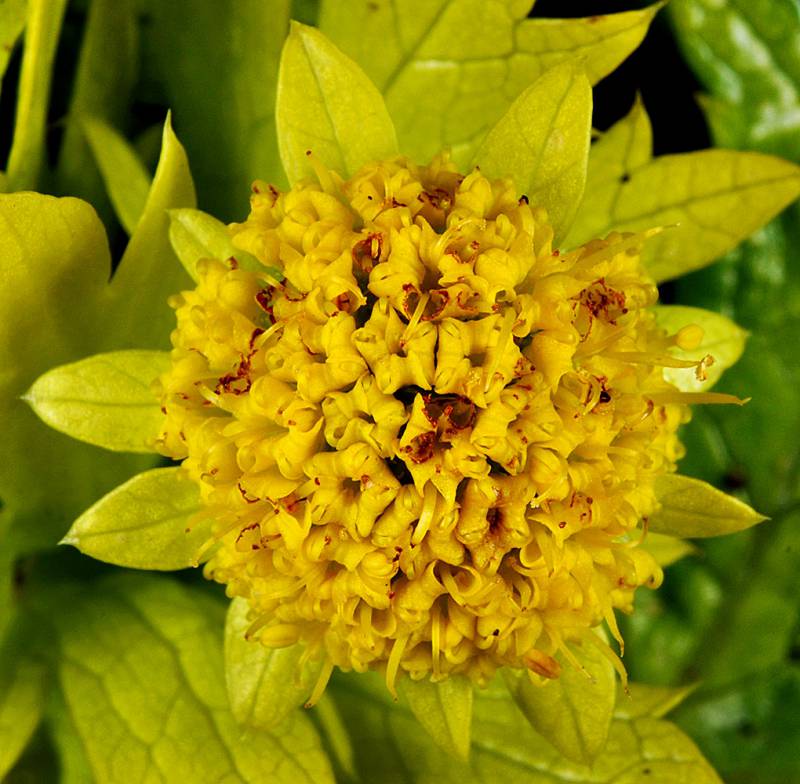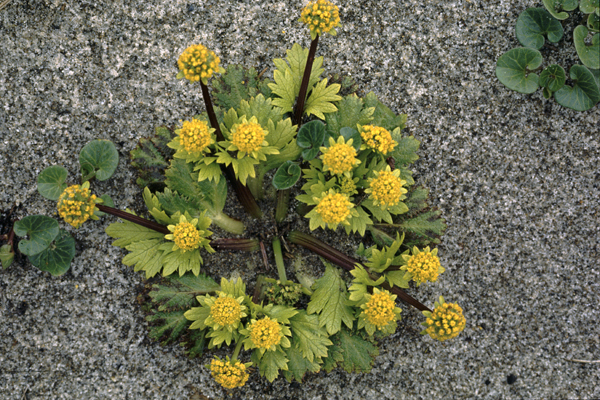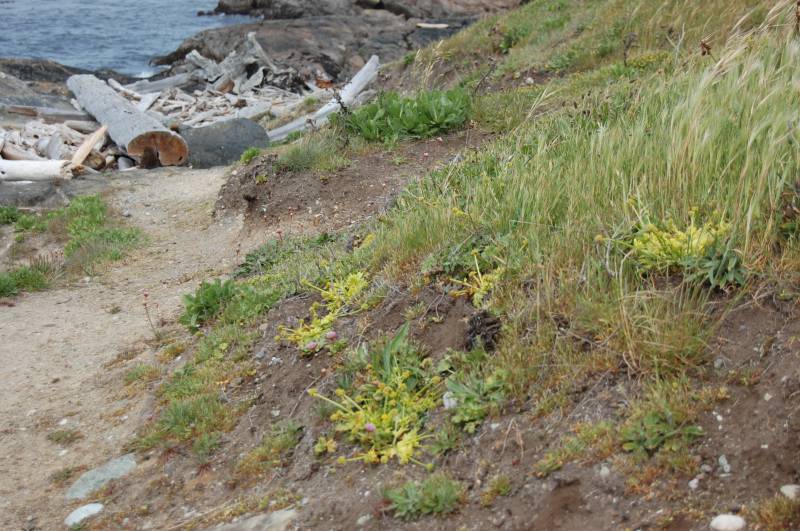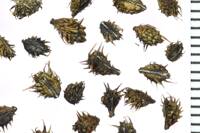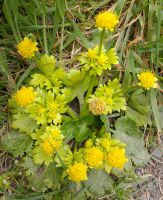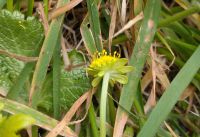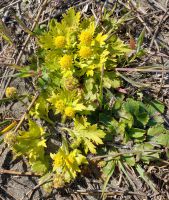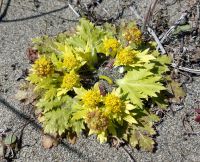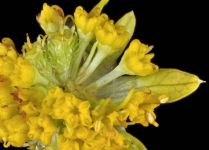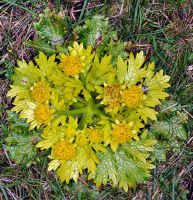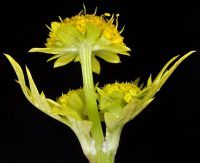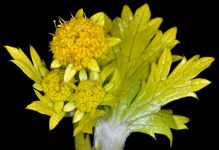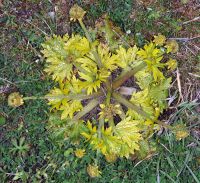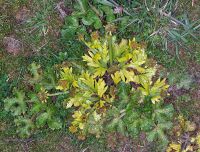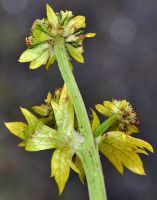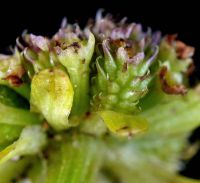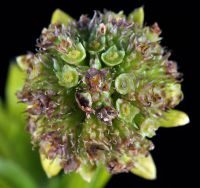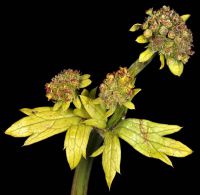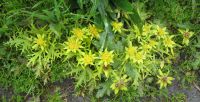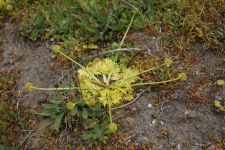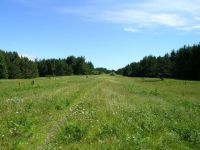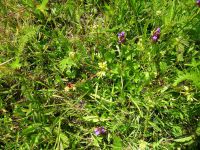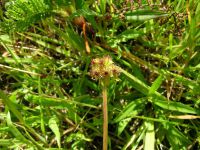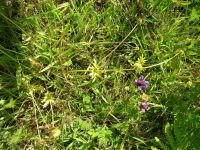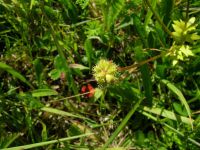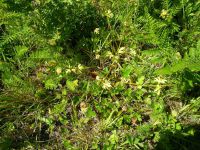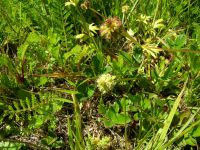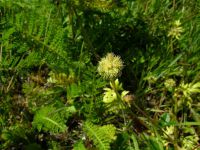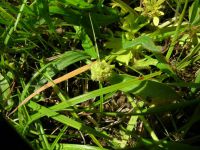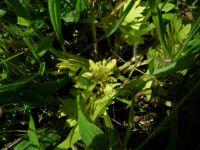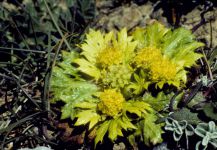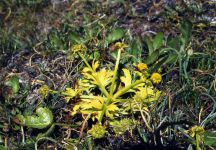Distribution: Occurring west of the Cascades crest along the coast in Washington; Vancouver Island, B.C. south along the coast to California.
Habitat: Maritime species of coastal bluffs, meadows, and balds.
Flowers: March-May
Origin: Native
Growth Duration: Perennial
Conservation Status: Endangered in Washington (WANHP)
Pollination: Bees, flies, moths
Taprooted perennial, the stem much branched at the base into prostrate or ascending branches 5-30 cm. long.
Leaves mostly basal, rosette-forming, somewhat yellowish, broadly petioled, the blade 2.5-6. cm. long and 2.5-9 cm. wide, 3-cleft, the primary segments toothed or cleft, the terminal larger than the lateral, which angle forward; cauline leaves few and reduced, opposite and each subtending a branch.
Inflorescence of several head-like, ultimate umbels terminating the branches, yellow, about 1 cm. wide when flowering; umbels subtended by a prominent involucre of 8-17 oblanceolate, entire or tri-lobed bracts 5-15 mm. long; ultimate umbels 20- to 25-flowered, with about equal numbers of perfect and staminate flowers; calyx lobes ovate, acute, soft, 1-2 mm. long, attached to each other below the middle.
Fruit ovoid to sub-globose, 2-5 mm. long and 2-3 mm. wide, covered above with stout, recurved prickles.
Publication: Bot. Beechey Voy. 141. 1832.
Sanicula ×howellii (J.M. Coult. & Rose) Shan & Constance
PNW Herbaria: Specimen records of Sanicula arctopoides in the Consortium of Pacific Northwest Herbaria database
WA Flora Checklist: Sanicula arctopoides checklist entry
OregonFlora: Sanicula arctopoides information
E-Flora BC: Sanicula arctopoides atlas page
CalPhotos: Sanicula arctopoides photos

